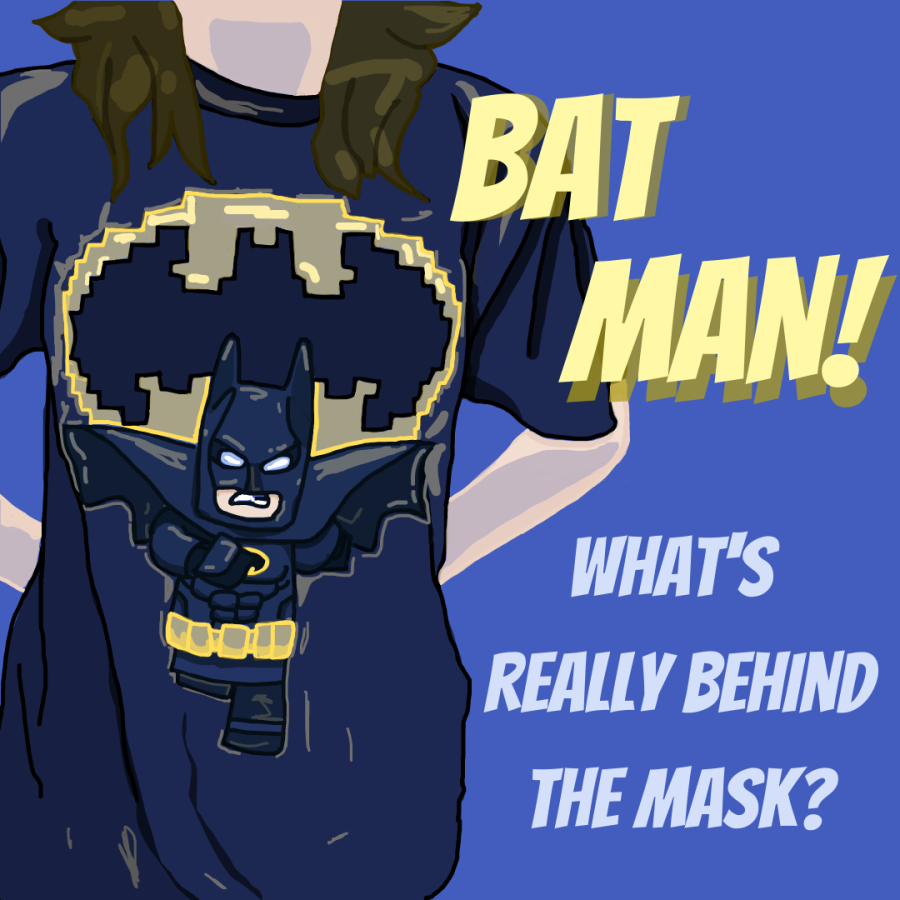The Batman Within Us
December 2, 2022
There is something in the way we can relate to Batman. In the world of cinema, superheroes have always been a staple. With influential characters like Wonder Woman, Captain America and Black Panther, it is not hard to find inspirational heroes. A prime example of the hero archetype is Batman, a disguised figure who challenges danger in the fictional city of Gotham. The character was first introduced in the 1960s and has only continued to rise in popularity over the decades. Batman exceeds the boundary of pure storytelling, and his journey of overcoming trauma to improve is nothing short of inspiring.
Recently released, the latest Batman film follows Batman, or Bruce Wayne, as he faces the chaos and mystery of a clever, clue-leaving killer in the city of Gotham. The franchise’s newest adaptation echoes a theme that has been continuously present throughout Batman’s history as a screen character- the importance of achieving what needs to be done for the greater good. Batman’s unrelenting bravery and undying dedication to doing the right thing sets an example for viewers by inspiring others to be fearless and to stand up for what they believe in.
Long-time Batman advocate and freshman Logan Hindes voiced his perspective on the movie’s character: “Batman was always relatable because he didn’t have any real superpowers,” he explained. “It was like anyone could be Batman; anyone could be behind the mask.”
Detailed in the most recent The Batman, Batman is a complex character in both his superhero and actual persona. Wayne struggles with trauma from his parents’ deaths, constantly dealing with emotional battles, and tries to cope by doing what he believes is right. The character’s motives for becoming a hero come from grief and loss, problems that people encounter in their daily lives.
Batman has had a difficult journey to become the character we know now, and his story of learning how to overcome his experiences has left a memorable impression on the character’s large fan following.
“He’s different from other heroes,” added Batman fan and freshman Mishal Ahmad. “Because Batman doesn’t have powers, his strengths come from sheer determination. He also learns to have a family again and open himself up, which I think is a valuable lesson that all of us can learn.”
As students explained, Bruce Wayne’s character is very realistic despite being called a superhero. This makes him more relatable, as no fantastical powers shadow his personal life. Of course, Batman still exerts elements of fantasy, but he also represents millions of people worldwide dealing with genuine problems. No one can really be Batman, but they can be a hero by solving problems and making the world a better place.
Furthermore, people find reassurance in knowing beloved superheroes also deal with problems similar to theirs. Watching Batman and Catwoman battle with their emotional stresses and complicated lives whilst also putting on an unbothered facade is why these characters and stories are loved by audiences; they make them feel seen. We may hide our struggles and believe no one understands, but some of our favorite superheroes do.
Despite being fictional, the characters are both a strong inspiration and have an overall relatability to fans. Viewers can find comfort in knowing that figures they look up to struggle with trauma or bad memories just as much as they do.
Batman’s powers of strength and courage were accomplished by his own hard work. The film reminds us that there is no shortcut to success we can take with a wand or magic power. Batman shows us that anyone can be brave, and anyone can stand up and accomplish their beliefs.



